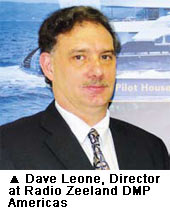Offshore oil rigs require maximum security due to their volatile and demanding environments. Protecting them from threats and ensuring safe operation are equally important. Today's state-of-the-art technologies keep drilling facilities safe.
Offshore oil rigs require maximum security due to their volatile and demanding environments. Protecting them from threats and ensuring safe operation are equally important. Today's state-of-the-art technologies keep drilling facilities safe.
Oil prices have gone up, as recent signs indicate the global economic contraction will slow in the coming months. Although global oil demand is expected to decline by 1.6 million barrels per day (mb/d), petroleum will remain a key energy supply. According to OPEC's "World Oil Outlook 2009," world consumption of oil reached 84.2 mb/d in 2009, and will grow by 1.1 mb/d per year from 2010 to 2020. This heavy consumption leads to more upstream investment, pegged at US$2.3 trillion by 2030. The influx of cash for refurbishing existing oil fields and developing new sites provide ample opportunities for security.
Among all oil and gas production facilities, offshore drilling rigs present environmental challenges: surface and underwater threats coupled with salt water, corrosion and harsh weather conditions. "Fishing vessels operated in close proximity or moored at unmanned platforms may cause unintended damage," said Gord Loney, Director of International Sales at Senstar. "Vandalism, unauthorized intruders and piracy are other sources of danger."
The obvious economic value of rigs has made them targets for terrorists. A hostile takeover would be most frightening, as oil production in volatile regions could be critical to the local economy and political stability, Loney said. "An additional concern is that any damage made on the offshore oil facilities could have a significant impact on marine ecosystems, resulting in subsequent economic losses to coastal fishing, aquafarming and tourism industries."
Complete Protection
To handle the various aspects of security is a challenging task. "There is strong demand to implement stringent security measures and comprehensive solutions," said Eric Chan, VP of Intelligent Building Business Uuit, ST Electronics.  Integration of security technologies — radar, sonar, sensors, illumination, cameras and more — helps deliver better protection.
Integration of security technologies — radar, sonar, sensors, illumination, cameras and more — helps deliver better protection.
Early Detection
Using radar for large-area detection is common for offshore environments. It provides early warnings of approaching threats and allows personnel to take appropriate action. With the ability to track aircraft emergency location transmitters and transponder equipped vessels, the radar system protects platform crews, Loney said. "Many commercial-off-the-shelf solutions are now available for integration with security and safety systems." Given its exceptional long-range detection capability, radar is not without limitations. Major constraints include its inability to classify unknown targets without transponders and line-of-sight limitations, Loney said.
Sonar technology can be used to distinguish underwater threats from marine mammals, Radio Zeeland DMP Americas (RZDMPA) said in a prepared statement. Combined with tracking software, the sonar system can locate genuine threats in a complex subsea environment up to 900 meters.
With the remote locations and volatile environments of rigs, a response to a threat could take hours to organize. Long-range acoustic devices are deployed as nonlethal deterrence to warn off assailants and delay attacks, Loney said. They enable remote audio communication and send clear warnings beyond 300 meters.
Platform Protection
Grids, sensors and cameras are popular choices for securing platforms. A laser grid circling the perimeter prevents access and allows for short-range detection. For critical entry points, pressure sensors are deployed to detect intrusion.
Lack of light makes video capture difficult at sea. IR illumination can be used to provide extra light up to 220 meters, said Chan. Thermal cameras are useful for their ability to deliver images in the dark. "PTZ-housed thermal cameras can be directed to access radar targets at ranges in excess of five kilometers," said Loney.
Intelligent video has made its way to oil rig platforms. "Video analytics assist crews making sense of the vast amounts of images for better decisions and faster  responses," said Chan. By analyzing changes in pixels and geometric figures, video analytics access and classify threats.
responses," said Chan. By analyzing changes in pixels and geometric figures, video analytics access and classify threats.
"A typical application is combining thermal cameras and analytic software to detect intrusions in radar blind spots," Loney said. "Longer range assessment of unknown targets detected by radar is usually done by thermal cameras alone." Furthermore, intelligent video protects workers from potential danger. Video analytics can identify the presence of obstructions on the platform and define hazardous areas, Chan said.
Traditional alarm sensors and access control devices secure indoor spaces. An added attraction of access control is facilitating safety management. For example, it provides information on the numbers of workers that need to be evacuated in case of an emergency, Loney said.
In demanding offshore environments, security devices require robust housings to function outdoors. Corrosion-resistant and explosion-proof equipment are top priorities. "It is prudent to invest in quality solutions with a high meantime between failure and a low meantime to repair," Loney said. In addition, maintaining a low false-alarm rate is crucial. For sea-based drilling rigs, rescue missions often involve the coast guard, navy and military personnel, traveling by ship or aircraft. Any response to nuisance alarms will result in wasted resources.
Linking to Shore
A central control center is usually land-based, while the drilling rigs have on-site control rooms or radio rooms to operate security systems locally. With relevant data streamed to the central site for immediate security assessments, the central operators will have complete control over any security breaches and alarm threats, Loney said.
IP solutions are a trend for their greater interoperability, said Tay Yong Hong, VP of Network Solutions Business, ST Electronics (Info-Comm Systems). "Radio/voice data and video images can be processed in an IP-enabled system for onward transmission," said Loney. By integrating handheld reporting devices and forging connections by satellite, an incident can be reported to any location in the world, said Dave Leone, Director at RZDMPA.
However, power supplies and networking pose a daunting task in an offshore environment. "Umbilical cables, point-to-point RF communications and Wi-Fi transmission allows security systems to be installed during the design stage and have surveillance upgrades at existing drilling rigs," Leone said.
Bandwidth is another valuable resource, as sufficient bandwidth for video or voice streaming can be expensive. Point-to-point microwaves are used for long-distance transmissions and between manned platforms that are bigger and have more  power, Loney said. "Lower bandwidth requirements of the unmanned rigs are met by RF and Wi-Fi networks."
power, Loney said. "Lower bandwidth requirements of the unmanned rigs are met by RF and Wi-Fi networks."
A distributed architecture can save bandwidth and ensure reliability. "While marine communication may be subject to service interruptions during its long-haul transmission, storing and processing information locally provides a more robust system," Loney said. Streaming video with moderate picture quality at lower frame rate for immediate assessment and recording high-quality images for post-event inspection avoids wasting bandwidth.
Avoiding a single point of failure is critical for marine applications. Loney noted that using remotely programmable redundant systems makes sure that a failure in part of the system will not impair overall performance.
Integration
An effective security system integrates intrusion detection, public address, access control, video surveillance, fire alarms and evacuation systems, said Chan. It is essential to have a sophisticated command and control system to manage complex responses in an industrial setting. This ranges from detecting threats, interrogating and tracking targets, to assign relevant personnel to duties.
"Designed for ease of operation and to provide unified communication network, an interoperable radio communication system that brings different frequencies — HF, VHF and UHF — together is valuable," said Tay. Voice, video and data signals from various radios and sources can be converged with VoIP and RoIP technologies. "Through integrating various wired and wireless communication systems, information can be shared and distributed across disparate systems and networks."
Integrating geographical information aids security control for offshore sites. Currently, geographical information systems are used to integrate position information from GPS-enabled vessels and aircraft, Loney said.
Challenges
The remoteness of oil rigs makes installation and maintenance difficult. Providing enough manpower to install a security system is challenging in the first place, Leone said. "The products should be configured to be replaced with little technical effort."
Inherent delays of services and equipment inaccessibility make it important to adopt solutions with software for remote troubleshooting and system performance analysis, Loney said.
The readiness of a command and control system remains a major obstacle, said Chan. A combination of multisite surveillance, long-distance networking and a wide range of system integration poses serious challenges. Protecting multiple  drilling sites in demanding maritime environments requires sophisticated solutions for large-scale management. These environments include lightening, vibration, arctic weather and hurricanes.
drilling sites in demanding maritime environments requires sophisticated solutions for large-scale management. These environments include lightening, vibration, arctic weather and hurricanes.
Offshore security requires careful planning. To start with, Loney suggested consulting experienced vendors and choosing flexible solutions. A comprehensive installation plan at the design stage is recommended, added Chan.
While surveillance can be considered an expensive implementation without an immediate ROI, its added value has made video a growing trend. This is seen with thermal cameras, which are able to detect fire and spot overheating equipment for improved operation efficiency, Loney said. "Providing benefits beyond security will continue to gain popularity."